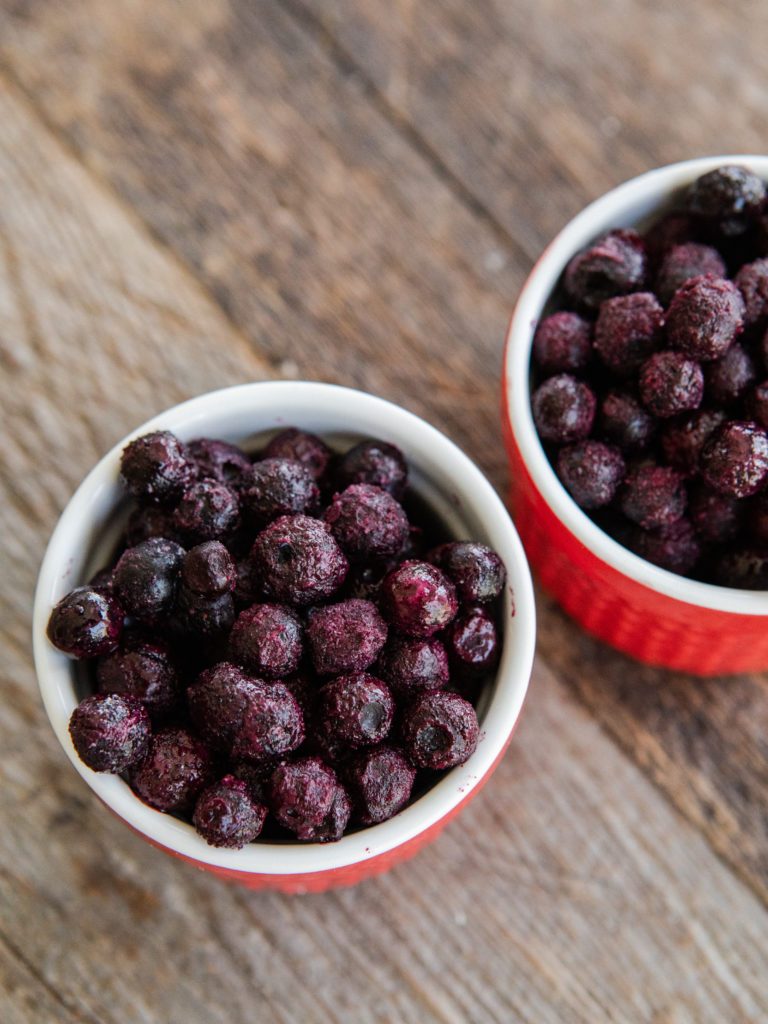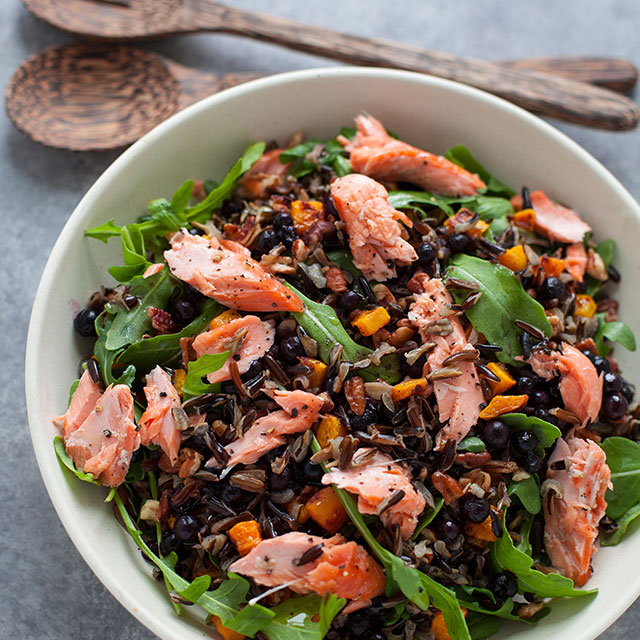The Power of Purple: Alzheimer’s and Brain Awareness Month
June is Alzheimer’s and Brain Awareness Month, and purple is the official color of the Alzheimer’s awareness movement. It’s a color that we focus on frequently when discussing wild blueberries and their health benefits, because of the beautiful (and healthful) purply-blue pigments that color our tiny berries. But of course, the seriousness of Alzheimer’s disease brings a new perspective to our favorite color.

What’s diet got to do with it?
It’s estimated that worldwide, 46 million people are living with Alzheimer’s disease and other dementias. The disease accounts for 60-80% of all dementia cases, according to the Alzheimer’s Association. Alzheimer’s disease forms over many years, and with human life spans increasing, the number of people with the disease is expected to continue to rise.
Unfortunately, drug treatment options to prevent Alzheimer’s are lacking. However, there has been increased focus on investigating modifiable risk factors, such as diet, that may help lower the risk for developing Alzheimer’s disease and related dementias. In fact, there is a large (and growing) body of evidence that supports the relationship between diet and cognitive function. For example, emerging research suggests the risk for Alzheimer’s disease (and other dementias) is associated with conditions related to cardiovascular disease and metabolic health, including obesity and insulin resistance. (Incidentally, research has documented that anthocyanins found in wild blueberries can positively impact all of these conditions.)
Where do flavonoids and anthocyanins come in?
Flavonoids are a large group of natural plant compounds that are known for their health benefits, including antioxidant and anti-inflammatory effects. Flavonoids are widely distributed in plant-based foods such as fruits, vegetables, grains, tea and wine. The flavonoid group has several sub-groups, and one of those is the anthocyanins. Many foods contain several flavonoid subgroups, but wild blueberries contain predominantly anthocyanins, which are concentrated in the beautiful blue skin of the berries.
What we know today about the multiple health benefits of flavonoids, including anthocyanins, were only discovered in about the last 20 years. However, flavonoids’ apparent protective effects against age-related chronic conditions, including cognitive decline, make them especially interesting to health researchers.
Recent evidence on anthocyanins and risk of Alzheimer’s disease
The notion that Alzeimer’s disease begins to develop several years and even decades before clinical symptoms appear, has prompted the research community to conduct nutritional studies focused on earlier periods.
One recent study, published in the American Journal of Clinical Nutrition, has also added to our expanding understanding of the potential importance of anthocyanin and flavonoid intake relative to Alzheimer’s disease. In order to examine relationships between flavonoid intake (either together in a large group or in individual sub-groups) and Alzheimer’s disease and related dementias, the researchers utilized data collected from a cohort of 2,800 Americans. Based on participant’s reports of estimated fruit and vegetable intake, the study examined six sub-groups of flavonoids, plus total flavonoid content. Several statistical approaches were used to look for associations that may have occurred over the roughly 20 years of data collection.
The results? Greater total flavonoid intake—and especially greater anthocyanin intake—was significantly associated with a lower risk of developing Alzheimer’s and related dementias.
The study’s conclusions were strengthened by the large number of factors that were considered in the statistical analysis. Beyond examining the typical factors such as age and education level , the study also examined the influence of physical activity, blood lipids, blood pressure, diabetes and more, in relation to risk of Alzheimer’s and related dementias.
“It’s exciting to find in the evolving science about dietary anthocyanins, that there is a consistency in the results between basic science approaches, like experiments in test tubes and observational studies in large populations of people. Overall, from recent analyses of up to 20 years of data in the prospective Framingham Offspring Cohort, this research team has revealed protective associations between the intake of dietary anthocyanins, brain health measured by magnetic resonance imaging (MRI), and Alzheimer’s disease and related dementias.” said Jeffrey B. Blumberg, PhD, Professor Emeritus at Tufts University, and one of the study’s authors. “These findings add to the growing evidence that a diet rich in flavonoid phytonutrients like anthocyanins, may reduce the risk of developing age-related neurodegenerative conditions.”
Can wild blueberries help Alzheimer’s disease?
Alzheimer’s research with wild blueberries aims to determine whether regular consumption of the berries can mitigate any markers associated with age-related decline in brain health and the presence of Alzeimer’s disease.
The condition known as mild cognitive impairment (MCI) may precede the development of dementia and Alzheimer’s disease. Therefore, individuals with MCI are of particular research interest when examining the effects of dietary components. In studies conducted with people who had MCI, supplementing their diet with blueberry powder led to better performance on memory tests, as well as tasks which required executive function.
Executive function is related to the brain’s ability to manage the complex tasks of everyday living. Research indicates that, in people who are developing Alzheimer’s disease, executive function is impacted in the early stages of the disease.

Eating for brain health
Eating to modify the risk of getting Alzheimer’s disease is an area of scientific investigation that is still very much in its early days. Researchers are developing better tools to study the diverse ways that anthocyanins support our health. And together, clinical and population studies contribute to the growing body of evidence that anthocyanins may be helpful in fighting cognitive decline, Alzheimer’s disease and related dementias.
While there is no anti-Alzheimer’s diet as of yet, making sure you get plenty of anthocyanins in your diet can’t hurt your brain—and may, in the long run, prove helpful. Getting a daily scoop of wild blueberries into your diet is an easy and tasty way to get your anthocyanins.
Look for them in your supermarket’s freezer section—and check the bag to make sure they are “wild” blueberries. Wild blueberries have 33% more anthocyanins than ordinary blueberries. And if you’re looking for more ways to incorporate brain-healthy recipes into your family’s diet, check out the new (free to download!) Cognition Kitchen guide.

